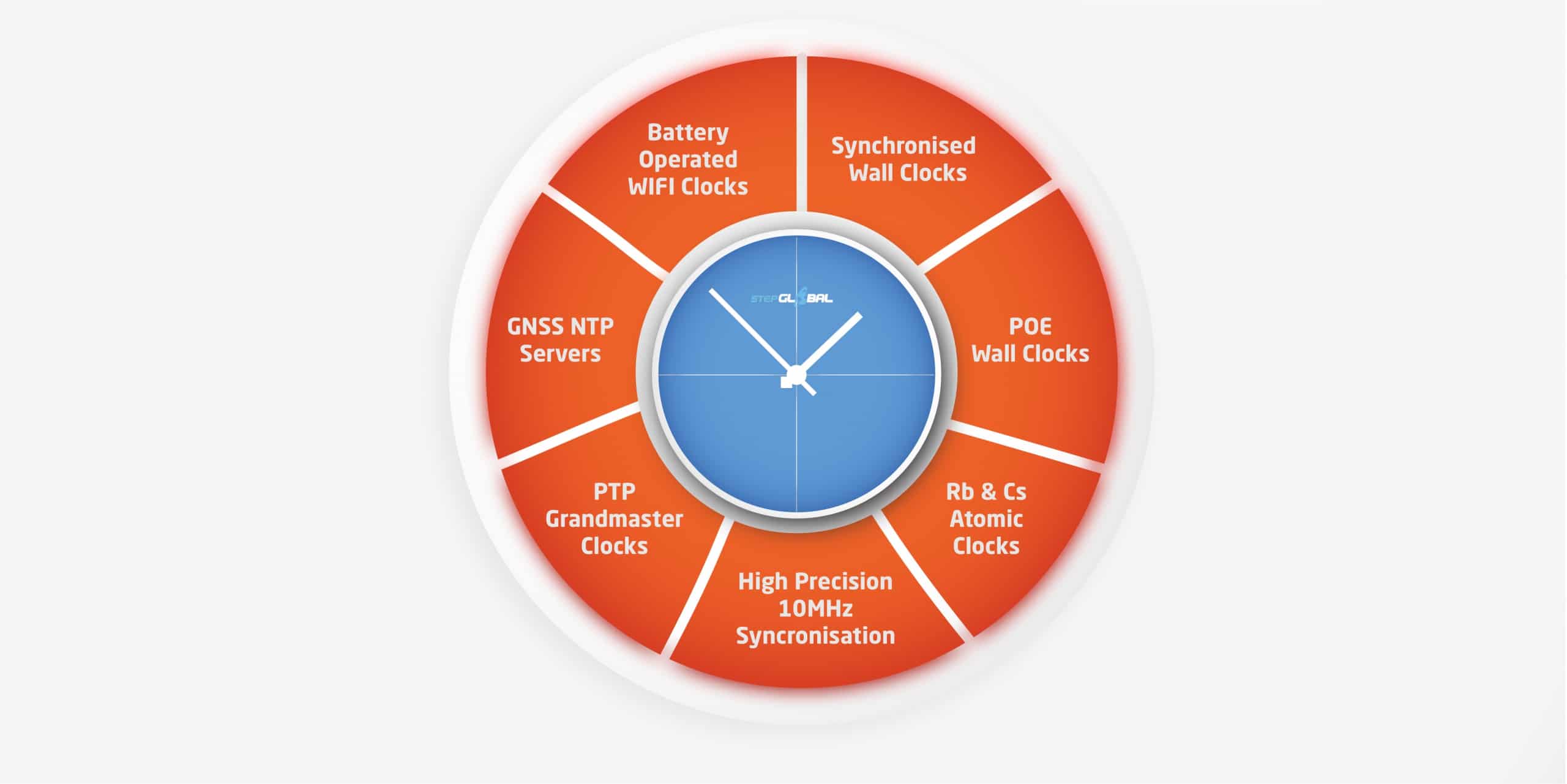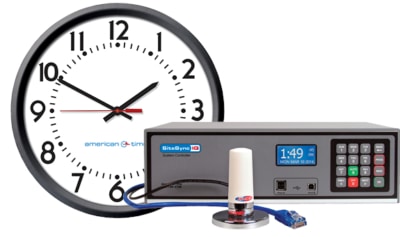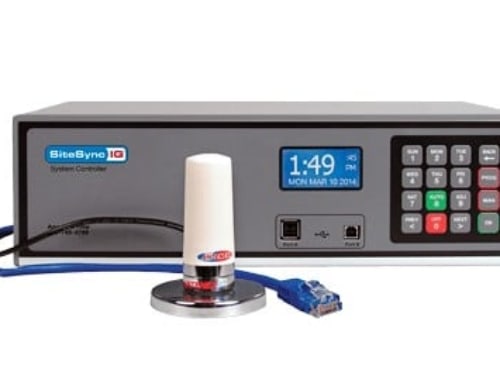What is Precision Time?
Precision time refers to having a time signal or message that is accurate to UTC (Universal Time) within microseconds for continuous periods. Step Global is your one stop shop for everything related to providing precise time.
Generation, Acquisition, Synchronization, Display and Security
In today’s digital world, time is the cornerstone technology of everything digital. Those of you who remember the Y2K panic back in 1999 when it looked like our timeclocks would fail at midnight on the 31st December, will have an appreciation on how the systems back then were so time dependent. 20 years on and our dependency on time has become many times greater, both in terms of the resolution demands for the ever-increasing bandwidth requirements – network speeds in the order of Terabits per second – and then the security of financial transactions as we move to a cashless society.
This article describes the different product offerings that make up all the elements of network time solutions from the generation of time signals through to detecting and mitigating attacks on time servers.
Generation – Atomic Clocks
The obvious source of precision time signals that can achieve a resolution down to nanoseconds, or even picoseconds is an Atomic Clock. In addition, this source has to be stable. “Stability” refers to how consistently a clock measures a unit of time; its measurement of the length of a second, for example, needs to be the same (to better than a billionth of a second) over days and weeks.
Atomic clocks combine a quartz crystal oscillator with an ensemble of atoms to achieve greater stability. Atoms are composed of a nucleus (consisting of protons and neutrons) surrounded by electrons. Each element on the periodic table represents an atom with a certain number of protons in its nucleus. The number of electrons swarming around the nucleus can vary, but they must occupy discreet energy levels, or orbits.
A jolt of energy — in the form of microwaves — can cause an electron to rise to a higher orbit around the nucleus. The electron must receive exactly the right amount of energy — meaning the microwaves must have a very specific frequency — in order to make this jump.
The energy required to make electrons change orbits is unique in each element and consistent throughout the universe for all atoms of a given element. For instance, the frequency necessary to make electrons in a carbon atom change energy levels is the same for every carbon atom in the universe.
This is the reason that Atomic clocks are used in Navigation Satellites like GPS, they provide precise time no matter where they are in their orbit.
Step Global has a range of atomic clocks from lower cost modular Rubidium clocks:
Thru the ultra-low power CPT (Coherent Population Trapping):
To the very high performance Optically Pumped Caesium clocks:
And the Telco First Class reference Optically Pumped Caesium clock:
Acquisition – GNSS (Global Navigation Satellite System)
There are a couple of public sources for obtaining precise time signals but the most common, and the most accurate, source is the Global Navigation Satellite System (GNSS). GNSS consists of satellite constellations such as GPS, GLONASS, BEIDOU, Galileo and IRNSS. Each of these satellites have multiple on-board atomic clocks that are synchronised from their earth stations ensuring the generation of highly stable time signals.
Accessing these signals and obtaining a stable and accurate time source does require a receiver capable of dealing with all the conditions that impact signal integrity from the satellites and provides a suitable holdover period if the satellite signal is lost.
There are many factors that can have a detrimental effect on the time signals from the satellites, this can be ionospheric noise through to satellite wobble and multipath signals. If your device does not require microsecond accuracy and stability, then a standard GPS/GNSS receiver can be used. However, if you do require accuracy and stability then it is necessary to use a receiver that is specifically designed to perform. To give you an example just use your smartphone with GoogleTM Maps and look for your position, you will see your position move around a lot and then after it settles it can still have your displayed position out by many meters. Remember, your position on the map is based upon the timing signals received from the satellites.
A capable timing receiver uses algorithms to manage all the variations that can occur with the signals from the satellites and provide a time output that is within 15 nano seconds of UTC time. Trimble timing receivers are considered world leaders in providing accurate and stable time as they use T-RAIM, Timing Receiver Autonomous Integrity Monitoring. T-RAIM initializes the receiver by first conducting a self-survey by averaging 2000 position fixes to establish its static reference point. Next step is to determine the clock solution at the same time as automatically detecting and rejecting faulty satellites from the solution. The result is a 1 Pulse Per Second output that is within 15 nanoseconds of UTC.
Step Global provides a range of Trimble dedicated Timing Receivers.
- RES720 is a 19mm x 19mm Secured Dual Band (L1/L5) GNSS Timing module with Nanosecond accuracy PPS and PP2S output.
- RES SMT 360 is a 19mm x 19mm ultra-thin surface mount module for embedded applications. PPS and PP2S output.
- ICM SMT 360 is a 19mm x 19mm ultra-thin surface mount module for embedded applications. PPS, PP2S and a 10MHZ output. Holdover stability is 7 microseconds over 5-minute period.
- Acutime Smart Antenna is a fully housed integrated time receiver and antenna. PPS and serial outputs.
- Mini-T GG is a small form factor module with an on-board over controlled oscillator for providing excellent holdover performance of 5 microseconds per 24 hours for its PPS and 10 MHz output.
- Thunderbolt E is a fully housed unit providing PPS and 10 MHz output. It has a holdover performance of 8 microseconds per 24 hours. Has built-in Double Oven Controlled Oscillator.
Timing Synchronization – NTP Servers & PTP Servers
Synchronisation is where the time pulse at two distant points must be equal to within a few nanoseconds. A simple example of this is with digital broadcast TV, if there are two transmitters within a receiver’s range, then if those transmissions are not synchronized then the TV receiver will only get artifacts displayed. So, to prevent this occurring, a GNSS timing receiver (Thunderbolt E) at both base stations is deployed and because they are both locked to UTC then the TV transmissions will be synchronized.
With today’s digital mobile phone technologies, the importance of synchronized timing is greater and will continue to grow. This is driven by customer demand for higher bandwidth and faster upload and download speeds. It is also necessary to reduce interference zones and has built in GNSS redundancy.
Some key requirements for 4G and 5G mobile phone networks are:
- Prevent dropped calls during call handover from cell base station to base station
- Reduction in packet retransmission due to time slot misalignment
- Ability to maximize bandwidth usage through coordination of signals from multiple base stations
The normal approach to provide synchronised time is by using a Master Clock, this is a clock that provides the time reference and then forwards that to clients. In computer networks the most common form of synchronization was to use an NTP (Network Time Server) that would transmit a Simple Network Time Protocol across the network. This was satisfactory for most computer networks running at speeds up to 1 Gigabit per second. With the introduction of faster networks, and mobile networks such as 5G the time precision over those networks demanded a new protocol, that is called PTP (Precision Time Protocol). On a local area network, it achieves clock accuracy in the sub- microsecond range.
Step Global has a range of NTP Servers:
- From Time Tools
- From Trimble
- Thunderbolt NTP TS200: GNSS referenced time server Outputs: NTP, 10MHz and PPS with 15nSec accuracy
- From Spaceon
- XHTFB600: NTP & SNTP Server, MD5 Security, 6 Ethernet Ports, Supports Master Slave Configuration
Step Global has the following PTP Servers:
- From Trimble
- Thunderbolt PTP GM200 Grand Master: (PTP & NTP) Multiple PTP Profiles(G.8265.1, G.8275.1, G.8275.2,Telecom-2008 Profile, SMPTE – Broadcast Profile), Outputs: 1588-PTP, NTP, SyncE, PPS, and 10MHz
Display – PoE and Wifi Clocks
Have you ever been in the situation where you can see two clock displays and they are not showing the same time? Imagine that you are in a position where recording of accurate time, even if only to within a minute, is very important as is the case in Hospitals in administering drugs or recording the time of events.
By deploying Ethernet, or Wi-Fi, connected clocks throughout the facility ensures that all displays show the exact same time. With connected clocks it means that changes with daylight savings is all automatic and all clocks change together relieving staff of having to be distracted in maintaining individual clock displays.
Step Global provides a large range of synchronised display clocks from analogue wall clocks and digital clocks.
- PoE Analog Wall Clocks: 30.5cm & 38cm, single or double dial, ceiling or wall mount, steel, wood or plastic
- Wi-Fi Analog Wall Clocks: 30.5cm & 38cm, single or double dial, ceiling or wall mount, steel, wood or plastic
- PoE Digital Clocks: 6.35cm & 10.2cm, 4 digit or 6 digit, red or green LED
- Wi-Fi Digital Clocks: 6.35cm & 10.2cm, 4 digit or 6 digit, red or green LED
Security
Spoofing attacks have become significantly more frequent and can have a disastrous impact on precision time systems. It is almost impossible to know that you are being spoofed if you do not have the ability to monitor your tracked GNSS signals.
Step Global can provide a solution from GPSPATRON that can quickly identify spoofing, and many other interference sources, and immediately take action against it.
The system consists of affordable three-channel GNSS probes (GP-Probe) and a powerful cloud service (GP-Cloud).
GP-Probe conducts GNSS signal measurements using 3 channels with angle-of-arrival estimation and transmits raw data to the GP-Cloud for real-time processing.
GP-Cloud uses advanced anomaly detection algorithms for determining any nonlinearities present in the radio frequency signals.
If the system detects any type of spoofing or jamming, as well as GNSS parameters degradation, you will receive instant notification.
For more information contact sales@stepglobal.com









